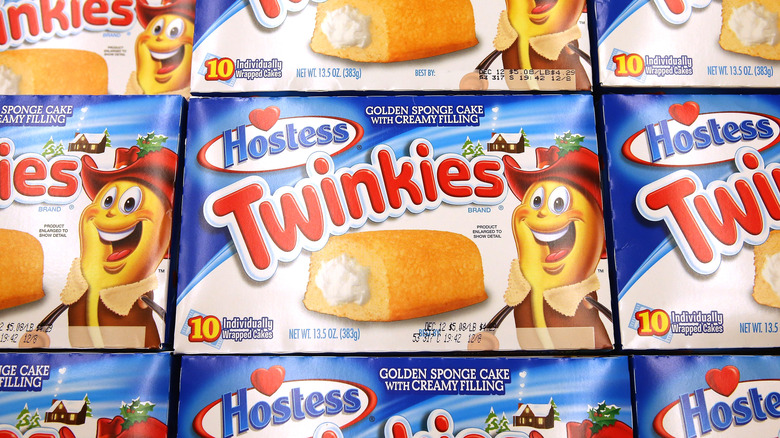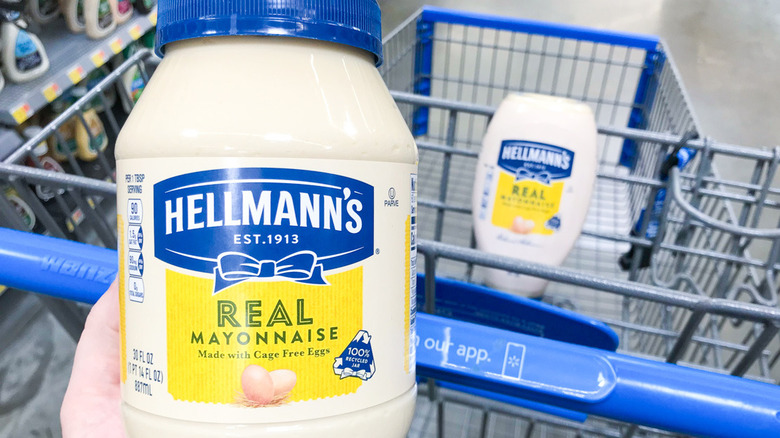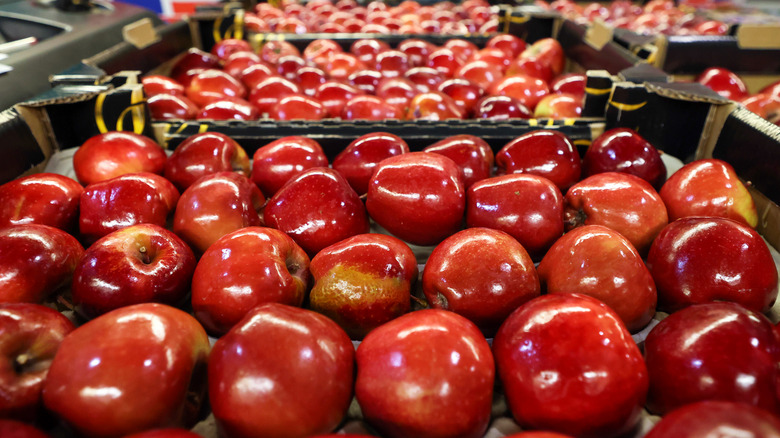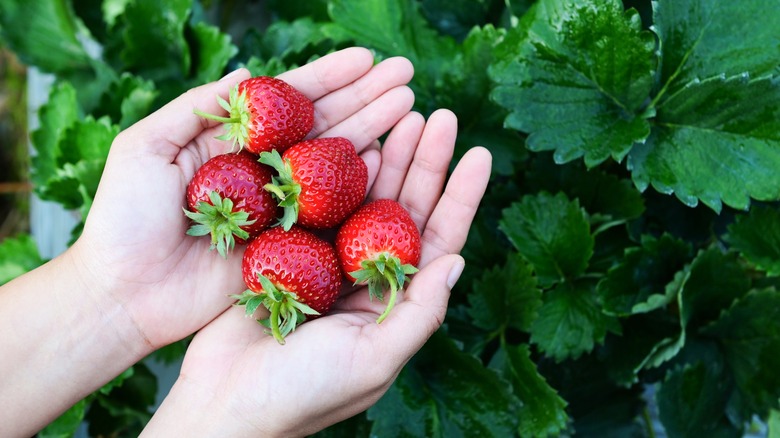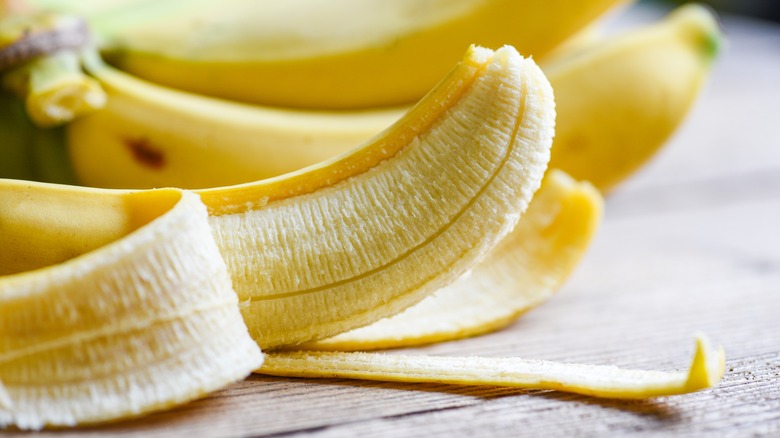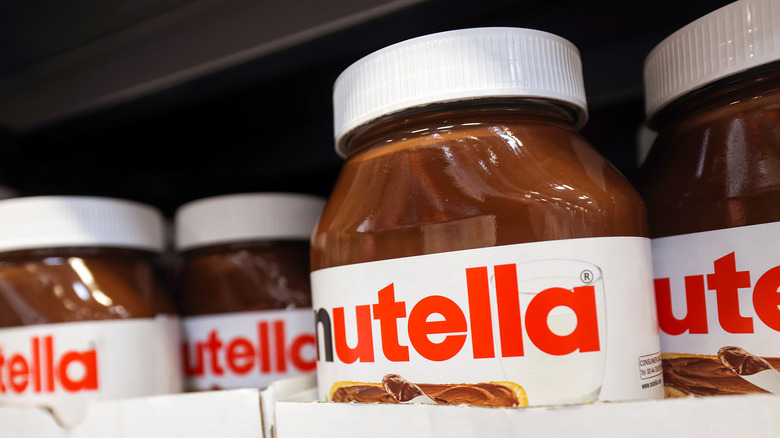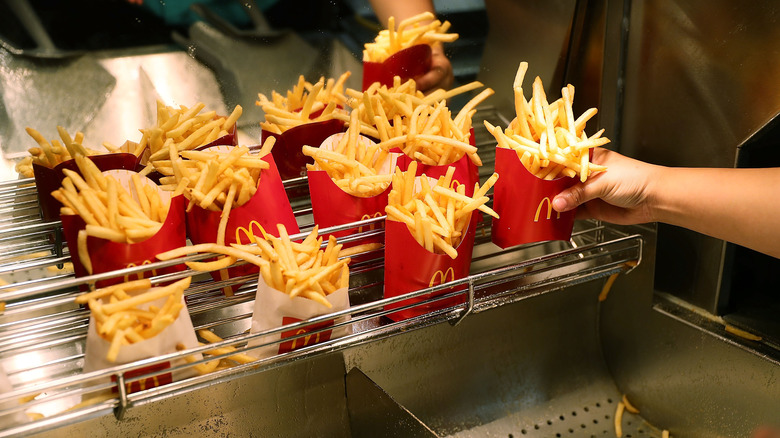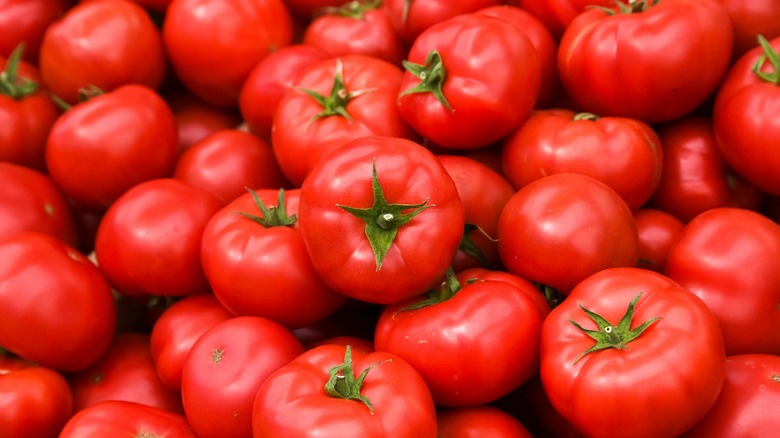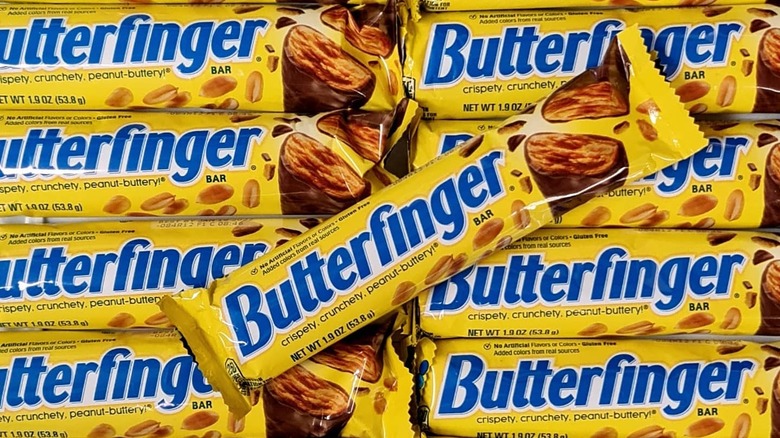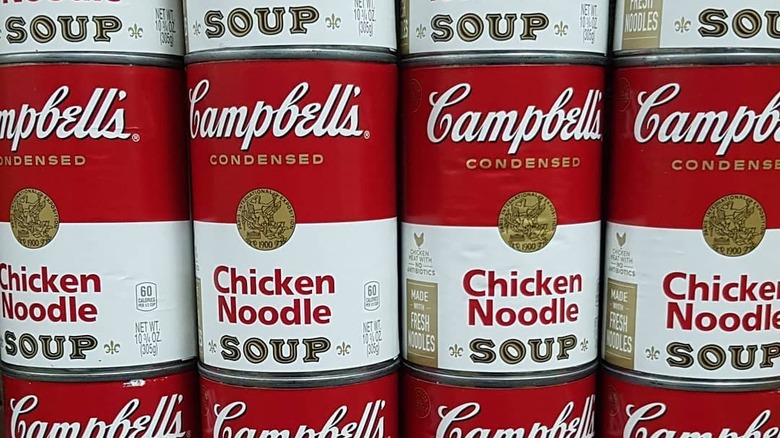15 Foods That Don't Taste As Good As They Used To
All of us probably have foods that we swear don't taste the way they used to. Occasionally, you might feel like you're the only one who can notice anything different, but there are times when fans join together to decry a change in a food they've loved for years. Sometimes, it comes down to nostalgia. We associate certain foods with fond memories of our youth and as our tastes evolve, it might just turn out that the food we were eating was pretty awful all along.
However, there are foods that do change for one reason or another. Brands change ownership, and the new buyers might want to try something new to appeal to customers. Recipes, ingredients, and manufacturing processes can also change for plenty of valid reasons. Some ingredients become hard to source and are more expensive, forcing companies to find alternatives. This can be especially true when brands are looking to scale up and need to buy ingredients in greater quantities, or need to increase durability and shelf-life to export their food around the world. Whatever the reason, below is a list of foods that most consumers agree have changed over time, and not for the better.
Twinkies
One of America's most iconic sweet treats, the cream-filled cakes made by Hostess have been a staple snack since their invention over 90 years ago. Despite their lack of nutritional value, Twinkies have also found their place in pop culture, and references in various films and TV shows boosted their fame across the world.
To the dismay of many, Hostess, the company behind the delicious cakes, filed for bankruptcy in 2012 after plummeting sales, claiming consumers were turning their attention to healthier snacks. Just over a year later, Twinkie fans rejoiced when the brand was saved by a new buyer and relaunched the product; however, their joy was short-lived. As well as being smaller, a new 45-day shelf-life — the result of extra preservatives — appears to have impacted their classic flavor, with many Twinkie lovers claiming the new versions taste less fresh than the version they grew up with.
Hellmann's Mayonnaise
Most people would argue that when it comes to mayonnaise, nothing comes close to Hellmann's Real Mayonnaise. However, a few years ago, loyal customers began to raise concerns that their go-to mayo was no longer the same spread they knew and loved, a surprising revelation considering the mayo had barely changed since its invention over a century ago.
The main issue was that the consistency was thinner, more soupy, and less viscous, but some consumers also complained that their jars tasted different, almost rancid. Hellmann's insisted their recipe was unchanged, but Joanne Seltsam, a descriptive taster for a consulting firm specializing in consumer sensory experiences, agrees that, "The texture is definitely different" (via Slate). She goes on to explain that even if the ingredients list has remained the same, the manufacturing process may have been altered, impacting the texture and the familiar taste of the world's most popular mayo brand.
Oreos
Like Twinkies, Oreos have been one of America's most beloved cookies since their introduction in 1912. Interestingly, Oreos were originally a copycat of the almost identical Hydrox cookies released a few years before, but by the mid-20th century, most people had forgotten Hydrox cookies had even existed.
Over time, Oreos found worldwide fame, but around 2016, consumers started to claim the quality of the sandwich cookie had dropped. Most claimed that this was due to the parent company, Nabisco, shuttering the doors of its Chicago factory and moving production to their facilities in Mexico. The company claimed that while their Oreo recipe does vary across international markets, all North American Oreos have been left unchanged. It's possible that some of the backlash is linked to the loss of American jobs, a subject that made headlines at the time, but there are still American-based factories that continue to produce Oreos, so the theory might not hold weight.
Red Delicious apples
While everyone has their favorites, there's no denying that Red Delicious apples were seen as the clear winner for decades when it came to taste and appearance. However, the quality of this particular type of apple has clearly dropped as time goes by.
Although some companies go to great lengths to deny their products are any different, there's a clear reason that Red Delicious apples are now a shadow of their former self. As is the case with many types of fresh produce – as demand increases, growers are forced to adapt to meet consumers' expectations through selective breeding. As Red Delicious apples were highly regarded for their bright red, waxy appearance — this was given priority over flavor — the results were a somewhat mealy texture. The apples also needed to be more resistant for transport across the country, so growers chose mutations with tougher skin. While this helped the apples retain their appearance, by the time they hit store shelves many consumers found the change to be less than appetizing.
Girl Scout Cookies
The origin of Girl Scout Cookies can be traced back more than 100 years, when troops began baking cookies as a way of raising money to fund their activities. Initially, the cookies were baked by the Girl Scouts themselves, until their popularity meant outsourcing to factories was the only way to meet demand.
While some claim the cookies don't taste as good as they used to — and there's a possibility this can be attributed to the nostalgia factor — it could be due to the fact the cookies can taste different depending on where you live. The cookies are currently manufactured by two separate companies in two different bakeries — ABC Bakery in Richmond, Virginia, and Little Brownie Bakers in Louisville, Kentucky. A browse of their respective websites shows that ABC's ingredients list for Thin Mints differs from Little Brownie's, so if your cookies aren't tasting like they used to, it may be due to regional differences.
Strawberries
Just like apples, strawberry growers have spent years selectively breeding their fruit for specific properties. While consumers might argue that taste is the most important quality of a strawberry, the evidence says otherwise.
In an interview with NPR, Marvin Pritts, a horticulture professor from Cornell, says their research shows that "We've seen that yield has increased. We've seen that firmness has increased. But we've seen that sugar content and flavor has somewhat decreased." This implies that consumers view bigger as better, and that growers have sacrificed flavor in order to meet demand and ensure their strawberries survive transportation across the country. While this is unlikely to change any time soon, the best solution is to try and avoid buying your strawberries from supermarkets where they're likely to be mass-produced, and try and source them from a reputable farmers market if you live in an area that grows strawberries locally.
Pizza Hut
Most of us remember a time when nothing compared to Pizza Hut, a premier destination for birthday parties and family treat nights. However, almost everyone you ask will agree the quality of their pizza has plummeted since the days of their childhood.
Unfortunately, it seems that eventually, Pizza Hut was faced with a difficult decision. If they wanted to expand and continue offering pizzas at an affordable price, their recipe was going to have to change. Frozen dough was adopted over fresh in order to keep up with demand, and the quality of the ingredients dropped as the company struggled to keep costs low enough to attract customers. While these changes have worked in the sense that they kept the company alive and helped it expand in the international market, the company's reputation for excellent pizza had taken a big hit. Whether this model is sustainable is yet to be seen, but many are turning elsewhere in their search for delicious pizza.
Bananas
If you've ever wondered why banana-flavored sweets and treats taste uniquely different from real bananas, there's a pretty interesting reason for it. The chemist who created the artificial banana flavor was replicating the taste of a real banana, only that species is one that's extremely hard to find these days.
Between the 1870s and the 1950s, the Gros Michel variety was the standard banana variety across America, but it was nearly wiped out entirely in the mid-20th century. Panama disease, a blight that blackened the fruit from the inside out, tore across banana plantations throughout the world, with only a handful of areas left untouched. As a result, growers were forced to adopt the variety we know so well today, the Cavendish. While Cavendish bananas aren't quite as hardy — and anyone who's tasted a Gros Michel will agree the former can't match the original for taste — it was resistant to Panama disease, guaranteeing its survival.
Jaffa Cakes
Invented in the UK and named after Jaffa oranges, these bite-sized cakes aren't the only victims of a phenomenon known as "shrinkflation." If we included every food that's fallen foul of shrinkflation, this list would be endless, so we're using Jaffa Cakes as a prime example.
Shrinkflation occurs when production costs increase, but the manufacturers want to avoid raising prices for consumers. Instead, they keep prices the same while decreasing the size of the product itself to save money. In the case of Jaffa Cakes, the 5.5 centimeter diameter has been reduced by half centimeter, and the gooey, tangy orange filling has been decreased by 25%. For anyone who's grown up enjoying the classic British treat, the visual difference alone is extremely noticeable, and while the flavor hasn't technically changed, it's disappointing when you have to pay the same amount for an inferior product. Unfortunately, as inflation continues to rise worldwide, this won't be the last we see of shrinkflation.
Nutella
According to Italy Heritage, Ferrero Group's world-famous hazelnut spread was a way to give Italian workers an affordable sweet chocolatey treat at a time when wartime rationing had made chocolate too expensive for many to enjoy. Interestingly, cocoa prices may also be why Ferrero has changed Nutella's recipe once again.
In 2017, the company admitted to tweaking its formula after a German consumer group's sleuthing into the matter. While the key ingredients remain the same, Nutella now contains less cocoa and more skimmed milk powder, reducing the amount of fat in each jar but boosting the sugar content. Ferrero claimed the change was to improve the quality of the milk ingredients and the consistency of Nutella overall, but fans have not been happy. Without a true competitor, the changes don't appear to have harmed the Nutella brand so far, but only time will tell, and there's nothing to say a tastier newcomer won't try to usurp the king of hazelnut spreads one day.
McDonald's french fries
There's always been a healthy debate about which fast food companies offer the best items — for example, whether Burger King's burgers can stand up to the likes of Wendy's. However, there's one thing that most people will agree on: Nobody quite does french fries like McDonald's.
However, if you were lucky enough to enjoy McDonald's before 1992, you might have noticed that their fries tasted even better back then. Originally, McDonald's fried their fries in beef tallow, a rendered fat that supercharged their flavor. However, as saturated fats gained a reputation for being unhealthy in the early '90s, McDonald's preemptively made the switch to vegetable oil, worried that sales would drop if people thought their food was too unhealthy. While this is ironic in itself, it also turned out that vegetable oil wasn't even a more nutritional alternative. Unfortunately, the change stuck, and McDonald's best version of their excellent french fries is something many of us will never get the chance to enjoy.
Tomatoes
If you've ever tasted a fresh, locally grown tomato then you already know there's no comparison with the ones you find in the supermarket. Consumers had been questioning the decline in tomatoes' flavor for years, but it wasn't until 2017 that scientists decided to get to the bottom of things.
After testing hundreds of varieties and sequencing their genomes, researchers managed to identify the key compounds that give tomatoes their unique and delicious flavor. Antonio Granell, one of the researchers on the project, told The Guardian, "After the Second World War, seed companies started to worry about producing more to feed people." He goes on to say they discovered, "The flavor got lost because people didn't know what the molecular and genetic bases were, so they couldn't apply them. It was because they focused on quantity, productivity, and resistance." Essentially, the compounds responsible for tomatoes' flavor got lost over time, which is why many of today's varieties don't taste as good as they used to.
Butterfingers
Another century-old treat that's stuck around to this day, Butterfingers has changed hands a number of times over the course of history. When Nabisco sold the brand to Nestle in the 1980s, rumor has it the original recipe was lost, but consumer backlash remained minimal until Ferrero picked up Butterfingers in 2018.
Ferrero felt the brand's reduced sales were down to a lack of quality, and that Nestle had done nothing to improve the recipe over the course of their ownership. Objectively speaking, Ferrero did improve the quality of the ingredients in Butterfingers, dropping the hydrogenated vegetable oil and some preservatives, and using better peanuts, milk, and cocoa. However, despite their efforts, loyal fans were not quiet in their distaste for the change. Although there was plenty of vocal opposition, Butterfinger sales actually increased, so while Ferrero arguably made the right call, it goes to show how sensitive consumers can be to change, for better or worse.
Campbell's Chicken Noodle Soup
If you've never tried Campbell's Soup, you might associate it with Andy Warhol, who ensured almost everyone now recognizes its iconic can. For the rest of us, Campbell's Chicken Noodle Soup reminds us of sick days, wrapped up in a blanket with a packet of tissues and a bowl of warm noodle broth.
In 2015, Campbell's CEO told the New York Times how it was adjusting the recipes of some of its most popular soups, "We're closing the gap between the kitchen and our plants." In practice, this meant reducing the ingredients list by a third to cut out less natural additives and appeal to consumers calling for healthier products. It's hard to complain when a company listens to the public and makes an effort to improve the nutritional quality of its products, and it's not like the new version doesn't taste great. However, when we associate certain foods with particular memories and experiences, like being given a day off school when we're sick, how something tastes can be more important than whether it's better for us.
Chicken
It's no secret that as populations have grown, farmers have had to find ways to meet demand for meat. In the middle of the 20th century, they realized that selective breeding was a way to increase the size of chickens, while also producing them far more quickly.
Most of us are aware of the poor conditions of factory farming, something that's given rise to labels such as "organic" and "free range." What these terms actually mean can vary from state to state or country to country, and while they may be tastier and more ethical, they're still a far cry from the chicken our ancestors enjoyed. Added water increases the weight of the meat which can improve profits, but the result is a texture that's almost too tender in most cases. The flavor has also noticeably decreased, with modern chicken often being described as bland unless it's been well-seasoned. That's not to say it's not possible to find excellent chicken, but it's much harder to source and you'll definitely pay a premium for it.


